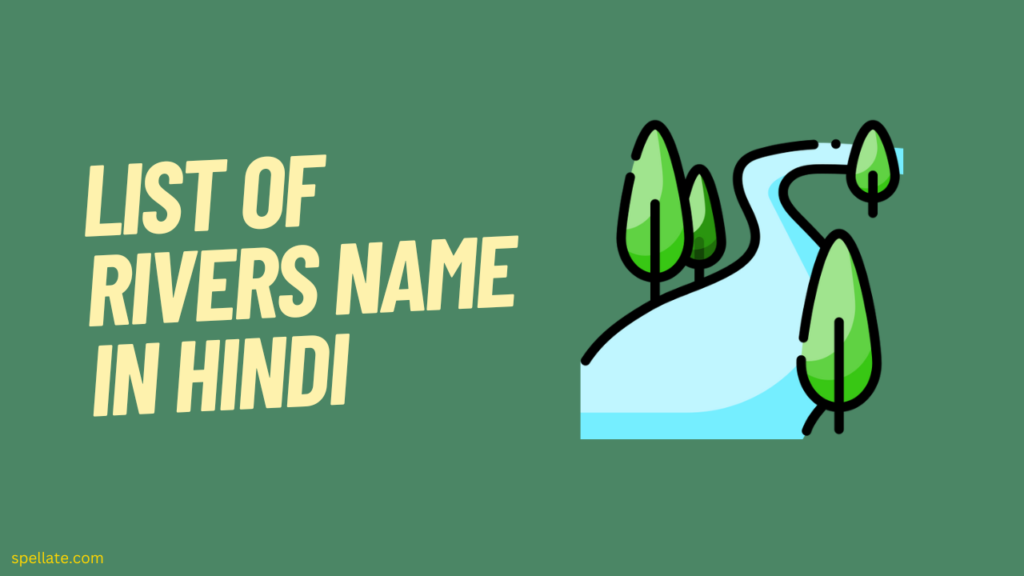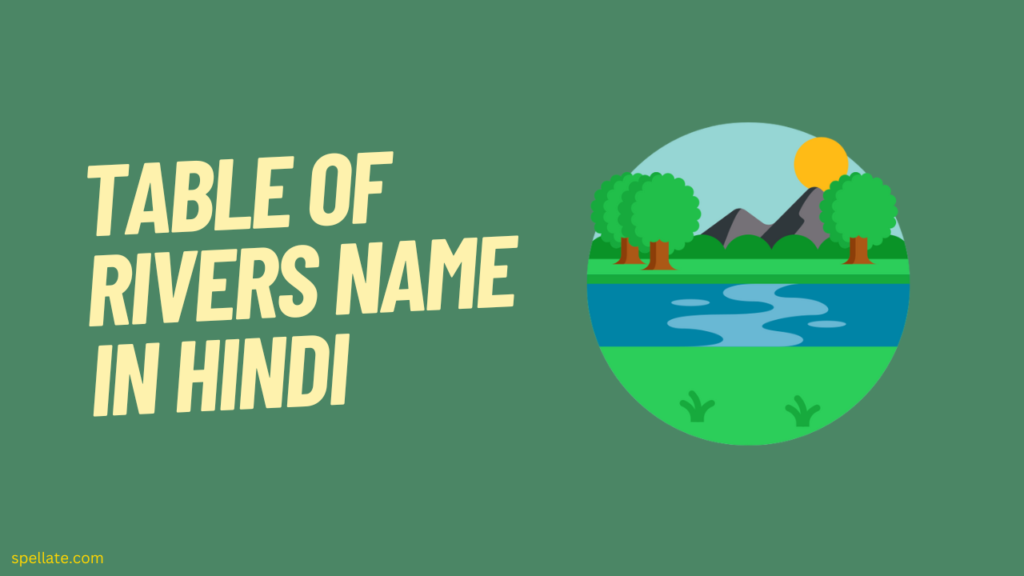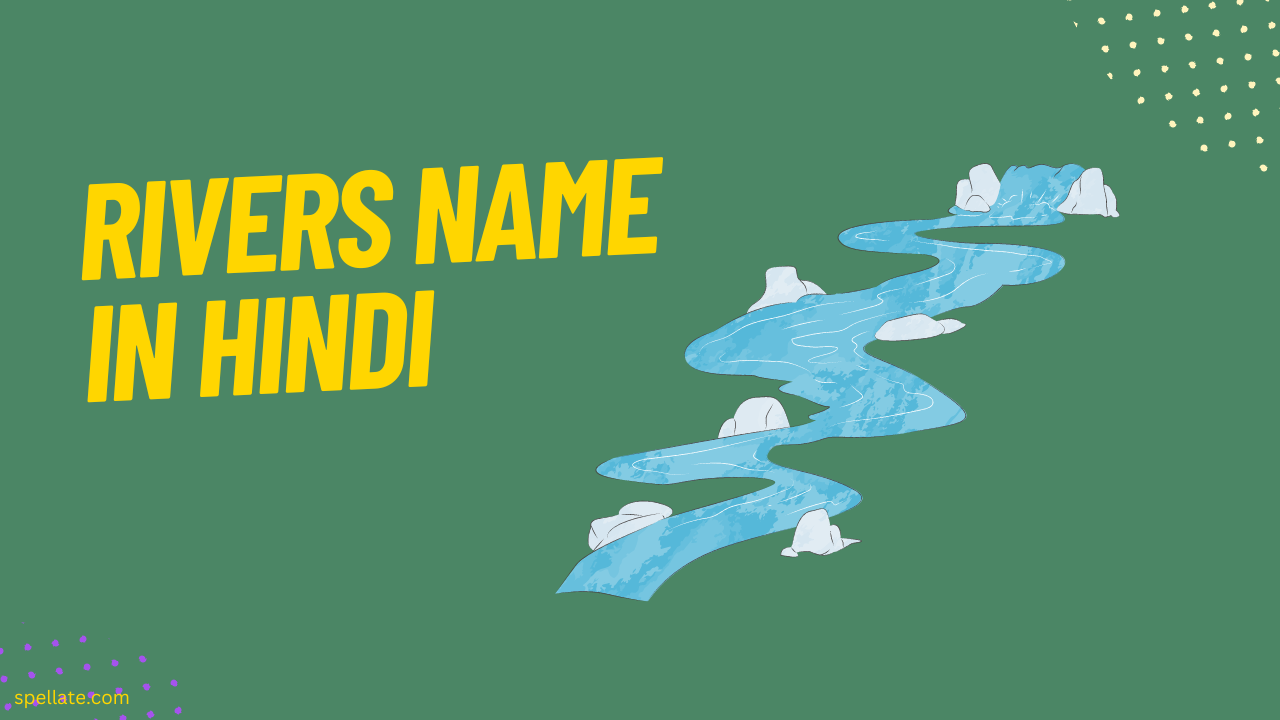A river is a natural water pathway that usually carries freshwater and moves towards another body of water at a lower height, such as the ocean, sea, bay, lake, wetland, or even another river. Rivers may flow either above ground or below the surface. Occasionally, a river may not reach another water source and instead runs dry at its course’s end or seeps into the earth. Smaller rivers can be referred to as creeks, brooks, or rivulets. While some places might define a stream based on its size, there are no universally accepted definitions for the broad term river when referring to geographical features.
Rivers play a significant role in the water cycle. Surface runoff from precipitation, meltwater released from naturally occurring ice and snowpacks, and various underground sources like groundwater recharge and springs are how water from a drainage basin enters a river. Although rivers are frequently seen as important landscape elements, they only comprise about 0.1% of the planet’s surface. Since many human cities and civilizations are centered around sizable rivers and streams, rivers are important to people.
The majority of the world’s major cities are built along the banks of rivers because these waterways serve as an essential source of drinking water, a source of food through fishing and agricultural irrigation, a means of transportation, a natural border, a place for defense, a place to take a bath, and a place to dispose of waste.
The Indian people depend heavily on their rivers for their daily needs. The nation’s river systems support many people’s livelihoods by offering irrigation, potable water, affordable transportation, and energy. This explains why almost all of India’s main cities are along riverbanks. The rivers are revered by all Hindus in the nation and play a significant role in Hindu mythology. In this article rivers name in Hindi and English are given, which helps you to learn names in Hindi.
- List of Rivers Name in Hindi
- 1. Ganga गंगा
- 2. Brahmaputra ब्रह्मपुत्र
- 3. Godavari गोदावरी
- 4. Yamuna यमुना
- 5. Kaveri कावेरी
- 6. Indus सिंधु
- 7. Narmada नर्मदा
- 8. Sutlej सतलुज
- 9. Chenab चिनाब
- 10. Jhelum झेलम
- 11. Ghaghara घाघरा
- 12. Gomti गोमती
- 13. Bhagirathi भागीरथी
- 14. Damodar दामोदर
- 15. Penna पेन्ना
- Table of Rivers Name in Hindi
List of Rivers Name in Hindi

Here is the list of rivers’ names in Hindi and their importance in Hinduism.
1. Ganga गंगा
A trans-border river in Asia, the Ganges passes through Bangladesh and India. The 2,525 km river is in the Uttarakhand region of India’s western Himalayas. The Ganges River begins in Gomukh, the terminus of the Gongotri Glacier, in the Himalayan Mountains. When the ice on this glacier melts, it creates the crystal-clear waters of the Bhagirathi River. The Ganges River transports material rich in nutrients as it flows, resulting in the deposition of healthy soil along its boundaries.
Due to this, civilizations have been able to flourish and expand along the river for many years. In Hinduism, the Ganges River is considered to be the most sacred. It is believed to be the Ganga goddess’ physical manifestation. According to Hindu mythology, taking a river bath on specific days results in the remission of sins and aids in achieving salvation.
2. Brahmaputra ब्रह्मपुत्र
Known by another name, the Yarlung Tsangpo, the Brahmaputra River System is one of India’s most important river systems. It boasts the second-largest drainage capacity in the country, only surpassed by the Ganges. The Brahmaputra is a transboundary river that streams through Tibet, Bangladesh, and Northeastern India.
Other names for it include Luit in Assamese, the Yarlung Tsangpo in Tibetan, the Siang/Dihang River in Arunachali, and the Jamuna River in Bangla. It is one of the largest rivers in the world. Millions of people in Bangladesh and India rely on the Brahmaputra River System for everyday sustenance.
Similar to the Ganga River, it serves a variety of functions for the community, including irrigation and transportation. The Brahmaputra has many tributaries on its north and south banks, described in more depth below.
3. Godavari गोदावरी
The Godavari River is part of Peninsular India’s greatest river system. With a total area of over three lahks sq. km, the Godavari basin spans the States of Maharashtra, Andhra Pradesh, Chhattisgarh, and Odisha, as well as lesser portions of Madhya Pradesh, Karnataka, and Puducherry (Yanam).
After the Ganga, the Godavari is the second-longest river in India. It unplugs into the third-largest basin, making up 10% of India’s land area. The river continues to house and reinforce a rich cultural history and has long been praised in Hindu texts.
Several barrages and dams have surrounded the river during the past few decades, maintaining a head of water (depth) that reduces evaporation. Its extensive river delta has a population density of 729 people per km2, nearly twice that of India as a whole, and a great danger of floods, which would be made worse in lower areas if the sea level were to rise.
4. Yamuna यमुना
The Yamuna is the longest tributary in India and the second-largest river that flows into the Ganges. It begins with the Yamunotri Glacier, located around 4,500 meters on the western flanks of the Bandarpunch peaks in Uttarakhand’s Lower Himalaya. It travels a total distance of 1,376 kilometers. Its drainage system covers 366,223 square kilometers or 40.2% of the Ganges Basin.
In Hinduism, the Yamuna is revered and worshipped as the goddess Yamuna, just like the Ganges. She is also called Yami in Hinduism because she is Yama’s sister and the sun deity Surya’s daughter. Popular stories claim that swimming in its holy waters can deliver one from the torments of death.
More than 70% of Delhi’s water supply comes from the Yamuna, which almost 57 million people depend on. Yamuna pollution in Delhi is primarily caused by four factors: poor water quality released by effluent treatment plants, household, and municipal disposal sites, soil erosion brought on by deforestation for agricultural purposes, and resulting chemical wash-off from fertilizers, herbicides, pesticides, and run-off from commercial activity and industrial sites.
5. Kaveri कावेरी
One of the major Indian rivers flowing through Karnataka and Tamil Nadu states is the Kaveri or Cauvery in English. The Kaveri River originates at Talakaveri in the Brahmagiri range in the Western Ghats, Kodagu district of Karnataka, at an elevation of 1,341 meters above mean sea level. It then travels about 800 kilometers until emptying into the Bay of Bengal. In the Mayiladuthurai district’s Poompuhar, it reaches the ocean.
After the Godavari and Krishna, it is the third-largest river in southern India. South Indians revere the Kaveri as a sacred river and refer to it as the Goddess Kaveriamma (Mother Cauvery). It is regarded as one of India’s seven holiest rivers. Both Tamil Nadu and Karnataka use it extensively for farming.
6. Indus सिंधु
The Indus is an Asian transboundary river that runs through South and Central Asia across the Himalayas. The 3,120-kilometer-long river originates in mountain springs northeast of Mount Kailash in Western Tibet, flows through the contentious territory of Kashmir to the northwest, makes a sharp left turn after the Nanga Parbat massif, and then flows through Pakistan before emptying into the Arabian Sea close to the port city of Karachi.
While the river’s lower course finishes in a sizable delta in the southern Sindh province of Pakistan, the northern portion of the Indus Valley and its tributaries constitute the Punjab region of South Asia. Several local civilizations have historically placed a high value on the river. The Persians called this river Hindu, while the age-old Indians called it Sindhu, guiding to it as “the boundary river.”
7. Narmada नर्मदा
The Narmada River, also known as the Reva and formerly as Narbada or Nerbudda in English, is the fifth-longest river in India and the longest west-flowing river altogether. It is also the state of Madhya Pradesh’s greatest flowing river. This river traverses the Indian states of Gujarat and Madhya Pradesh. Because of its enormous contribution to the two states in numerous ways, it is also known as the “Life Line of Madhya Pradesh and Gujarat.
Together with the Tapti River, it is one of just two noteworthy rivers in peninsular India that flows from west to east. India was an associate of the southern continental mass, generally called Gondwana, when the continents diverged into two separate masses about 270 million years ago. In Hinduism, the Narmada River is both a goddess and a river, like the Ganges. According to the Matsya Purana, all of the Narmada River’s banks are considered sacred.
8. Sutlej सतलुज
The Sutlej or Satluj River, which flows through the historic crossroads region of Punjab in northern India and Pakistan, is the longest of the five rivers. The Satadru name for the Sutlej River is also used. It is the Indus River’s easternmost tributary.
To offer irrigation and other utilities to the states of Punjab, Rajasthan, and Haryana, the Bhakra Dam was constructed around the river Sutlej. According to the Indus Waters Treaty between India and Pakistan, India is given access to the Sutlej River’s waters, primarily redirected to irrigation canals in India, such as the Sirhind Canal, Bhakra Main Line, and Rajasthan Canal.
The Sutlej, an antecedent river, formed before the Himalayas and continued to exist as they elevated. This river is part of India’s drainage basin, including states and union territories like Himachal Pradesh, Punjab, Ladakh, and Haryana.
9. Chenab चिनाब
One of the five important rivers in the Punjab region, the Chenab River runs through both Pakistan and India. It was created when two headwaters, Chandra and Bhaga, came together, originating in the upper Himalayas in the Himachal Pradesh region of India’s Lahaul. Before entering the Indus River, the Chenab travels through the Jammu region of Jammu and Kashmir, India, before crossing into the plains of Punjab, Pakistan.
According to the Indus Waters Treaty, Pakistan was given access to the Chenab’s waters. India is permitted non-consumptive purposes like the production of electricity. Pakistan makes great use of the Chenab River for irrigation. Several connecting canals convey its waters to the Ravi River’s channel.
10. Jhelum झेलम
The Jhelum River, one of the five rivers flowing through the Punjab region, derives from Verinag and traverses the Indian-administered Jammu and Kashmir part. It then flows across the Pakistan-administered Kashmir before making its way to the Punjab province of Pakistan. This river, located in the northern part of the Indian subcontinent, is known for being the westernmost river that courses through the Kashmir Valley. It has a length of around 725 kilometers overall and is a tributary of the Chenab River.
The ancient Greeks held the river in high regard, viewing it as a deity akin to other mountains and streams. The Nilmata Purana recounts how Kasyapa, a teacher, implored the Hindu goddess Parvati to come to Kashmir and cleanse the area of its inhabitants’ evil practices and corruption, the Pisacha people. Responding to his plea, Parvati transformed into a river in the underworld. Lord Shiva struck Nila’s home with his spear, creating an opening through which Parvati could rise from the underworld.
11. Ghaghara घाघरा
The Ghaghara River, also known as the Karnali River in Nepal and the Mapcha Tsangpo in Tibet is a perennial river that flows across international borders. It rises on the Tibetan Plateau’s northern Himalayan slopes, passes through Nepal’s Himalayas, and merges with the Sharda River at Brahmaghat in India.
Together, they make up the Ghaghara River, a significant Ganges tributary on its left bank. The longest river in Nepal spans 507 km. The Ghaghara River is 1,080 kilometers long from Revelganj in Bihar, where it meets the Ganges. It is the second-biggest tributary of the Ganges in terms of length after the Yamuna and the largest by volume.
12. Gomti गोमती
The Ganges River receives water from the Gomti, Gumti, or Gomati Rivers. It is believed that bathing in the Gomti on Ekadashi, the eleventh day of the two lunar phases of the Hindu calendar month, will wash away sins because the river is thought to be the son of Rishi Vashishtha. Gomti is one of the five transcendental rivers of India, according to the Bhagavata Purana, one of the most important religious texts in Hinduism. There is a rare Gomti Chakra to be found.
13. Bhagirathi भागीरथी
One of the two headstreams of the Ganges, the main river of Northern India and the holiest river in Hinduism is the tumultuous Bhgrath, a Himalayan river in the Indian state of Uttarakhand. The Ganges is regarded as having its origins in the Bhagirathi in Hindu religion, mythology, and culture. Nonetheless, due to its length and discharge, the other headstream, the Alaknanda, is regarded as the source stream in hydrology.
14. Damodar दामोदर
The Damodar River divides the Indian states of West Bengal and Jharkhand. The valley is home to comprehensive industrial activity and natural riches. The Damodar and its tributaries, formerly comprehended as the Sorrow of Bengal, have been subdued by the construction of various dams due to the devastation caused by its floods in the plains of West Bengal. It is India’s most polluted river.
15. Penna पेन्ना
Southern India’s Penna River also goes by Pinakini, Pennar, Penner, Penneru (Telugu), and Pennai (Tamil). The Nandi Hills serve as the source of this river, which after that flows as two distinct streams, one in a northern and one in a southern direction. The Penna begins in the Nandi Hills in the Karnataka state district of Chikkaballapur, and it flows through Karnataka and Andhra Pradesh until emptying into the Bay of Bengal in Andhra Pradesh. The Eastern Ghats’ rain shadow region includes the Penna River basin, which gets 500 mm of rain annually.
You may also like
Table of Rivers Name in Hindi

Given below is the table of rivers names in Hindi that flow in India.
| NO. | Rivers Names in English | Rivers name in Hindi |
| 1 | Lohit | लोहित |
| 2 | Subansiri | सुबनसिरी |
| 3 | Shipra | शिप्रा |
| 4 | Periyar | पेरियार |
| 5 | Musi | मूसी |
| 6 | Mahananda | महानंदा |
| 7 | Girna | गिर्ना |
| 8 | Ken | केन |
| 9 | Banas | बनास |
| 10 | Pranhita | प्राणहिता |
| 11 | Subarnarekha | सुवर्णरेखा |
| 12 | Shyok | श्योक |
| 13 | Kasbani | कासबनी |
| 14 | Padma | पद्मा |
| 15 | Hemavati | हेमवती |
| 16 | Ramganga | रामगंगा |
| 17 | Vaigai | वैगई |
| 18 | Sone | सोन |
| 19 | Ghaggar | घग्गर |
| 20 | Koyna | कोयना |
| 21 | Mahi | माही |
| 22 | Indravati | इंद्रावती |
| 23 | Penna | पेन्ना |
| 24 | Luni | लूनी |
| 25 | Bhima | भीम |
| 26 | Hooghly | हुगली |
| 27 | Teesta | तीस्ता |
| 28 | Tungabhadra | तुंगभद्रा |
| 29 | Damodar | दामोदर |
| 30 | Bhagirathi | भागीरथी |
| 31 | Alakananda | अलकनंदा |
| 32 | Gomti | गोमती |
| 33 | Sabarmati | साबरमती |
| 34 | Ghaghara | घाघरा |
| 35 | Beas | ब्यास |
| 36 | Jhelum | झेलम |
| 37 | Chambal | चंबल |
| 38 | Chenab | चिनाब |
| 39 | Koshi | कोशी |
| 40 | Betwa | बेतवा |
| 41 | Sutlej | सतलुज |
| 42 | Krishna | कृष्णा |
| 43 | Tapi | तापी |
| 44 | Mahanadi | महानदी |
| 45 | Narmada | नर्मदा |
| 46 | Indus | सिंधु |
| 47 | Kaveri | कावेरी |
| 48 | Yamuna | यमुना |
| 49 | Godavari | गोदावरी |
| 50 | Brahmaputra | ब्रह्मपुत्र |
| 51 | Ganga | गंगा |
FAQ’S
Which river in India is known as the River of Blood?
India refers to the Brahmaputra River as the “Blood River.” The Lohit River, also called the Zayul Chu by the Tibetans and Tellu by the Mishmis, is a river in China and India that meets the Brahmaputra River in Assam. Its name is from the Assamese word lohit, which means blood.
What is India’s holy river?
Answer: From the Himalayas to the Bay of Bengal, the River Ganges (or Ganga) passes through some of Asia’s most densely populated areas. Around 650 million people live in its river basin, larger than 1 million square kilometers.
Conclusion
Rivers, providing vital ecosystem services, greatly influence our everyday existence. They present us with means of transport, water for irrigation and drinking, among other benefits. Additionally, they act as a home to important species of fish. The Ganges River holds a special place in Hinduism as the holiest river, believed to be the manifestation of Goddess Ganga herself. As per Hindu folklore, bathing in the river on designated days can cleanse one’s sins and assist in attaining liberation. Dive into this article to discover the names of rivers in Hindi and their relevance within Hinduism.
